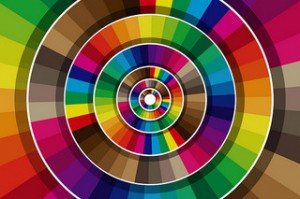Few would dispute that website design is a creative exercise. A recent study by Katharina Reinecke and colleagues [PDF] would imply that there’s some interesting, quantifiable science baked in as well. Both common sense and studies confirm that users judge a site’s appeal within seconds. Reinecke et al. offer some compelling findings on how visual complexity and colorfulness play into that initial judgement.
The researchers found visual complexity to be a significant factor in initial appeal. Low-to-medium complexity in the visual design translated into more positive initial impression. Apparently, preference for low visual complexity is notable for viewers over the age of 45. (Anecdotally, I’ve observed this as a similar cutoff age for tolerance of an endless scroll.)
 The study also analyzed reactions to colorfulness, measured in part by distribution of colors in an image and composition of adjacent colors (the complementary colors effect). Overall, colorfulness was found to be a less important driver of visual appeal at first impression.
The study also analyzed reactions to colorfulness, measured in part by distribution of colors in an image and composition of adjacent colors (the complementary colors effect). Overall, colorfulness was found to be a less important driver of visual appeal at first impression.
The researchers also captured and analyzed demographic data. Findings included that while age correlated with preference for low-medium visual complexity, education level interacted more significantly with colorfulness. Gender did not play a major role in either visual complexity or colorfulness, and the study indicated that further research is required to better understand the role of native language and aesthetic rating.
The process of creating website design remains highly creative and subjective. Great design, to a degree, follows Justice Stewart’s dictum: “I know it when I see it.” But the more we can understand and quantify the specific elements that form an initial and lasting impression, the better user experience we can create.
Photo credit: Victor Hertz
No comments yet.